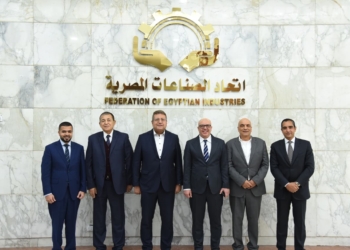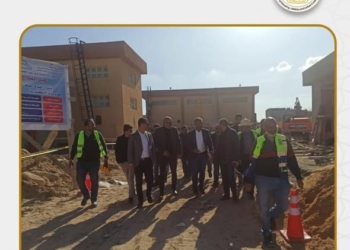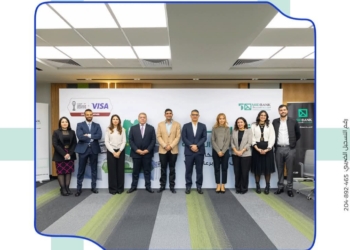Throughout human history, countless stories, beliefs, and cultural values have been encoded into symbols, artifacts, and natural phenomena. These hidden histories serve as vital keys to understanding the civilizations that shaped our world. Modern discoveries continue to bridge the gap between the distant past and today, revealing the richness of our collective heritage and inspiring contemporary innovations.
Contents
- The Power of Symbols in Ancient Cultures
- Uncovering Hidden Histories Through Archaeological Discoveries
- Natural Phenomena as Historical Clues
- Modern Wonders as Cultural and Historical Symbols
- From Ancient Symbols to Modern Wonders: A Continuum of Hidden Stories
- Non-Obvious Depths: Ethical and Philosophical Perspectives
- Conclusion
The Power of Symbols in Ancient Cultures
Symbols have been fundamental to human societies, serving as a universal language that transcended spoken words. In ancient civilizations, symbols conveyed complex ideas related to religion, governance, and identity. For example, hieroglyphs in Egypt were not merely decorative; they were a sophisticated writing system that encoded stories, laws, and spiritual beliefs. Similarly, totemic symbols in Indigenous cultures represented clans, spiritual guides, and natural forces, fostering social cohesion and cultural continuity.
Deciphering these symbols has often unlocked stories long lost to time. The Rosetta Stone, for instance, provided the key to understanding Egyptian hieroglyphs, revealing vast knowledge about ancient Egyptian life, religion, and history. Such decipherments are akin to linguistic puzzles that reveal the worldview of ancient peoples, offering insights into their values and worldview.
Examples of Lasting Symbols
- Hieroglyphs of Egypt — a complex script that encoded religious texts and royal decrees
- Totems in Indigenous cultures — symbols of ancestral spirits and social identity
- Mandala patterns in Asian spiritual traditions — representing cosmic order and spiritual journey
Learning to interpret these symbols allows historians and archaeologists to reconstruct narratives that would otherwise remain hidden, bridging the gap between silence and story.
Uncovering Hidden Histories Through Archaeological Discoveries
Advanced archaeological techniques have revolutionized our ability to locate and interpret buried or concealed artifacts. Ground-penetrating radar, LiDAR scanning, and DNA analysis enable researchers to detect sites without invasive digging, revealing entire civilizations previously hidden beneath layers of earth or water.
A remarkable case is the discovery of a vast cemetery containing approximately 8 million dog mummies in ancient Egypt. This find not only highlights the significance of dogs in Egyptian religion and daily life but also challenges previous assumptions about the scale of animal worship and the complexity of Egyptian burial practices. Such findings reshape our understanding by revealing social and religious dimensions that might have been overlooked.
As Dr. Jane Smith, an archaeologist specializing in animal burials, notes, “Discoveries like this demonstrate that every artifact, no matter how small, has the potential to rewrite history.”
Natural Phenomena as Historical Clues
Environmental factors often act as natural preservers or obscurers of history. For example, volcanic ash can entomb entire cities, preserving structures and artifacts in extraordinary detail, as seen with Pompeii. Conversely, erosion and natural disasters can erase evidence, making discoveries even more precious.
The case of the Red Sea’s algae bloom offers insight into how environmental events influence human history. In 2015, an unusual algae bloom caused widespread marine life die-offs, impacting local fishing communities and trade routes. Such natural events can leave behind biological and geological traces that inform us about climate patterns and ecological shifts in ancient times.
The Nile River’s annual flooding was a predictable environmental phenomenon that played a crucial role in the development of Egyptian civilization. Its reliable inundation cycle allowed for precise agricultural planning and contributed to the Egyptians’ sophisticated calendar system, illustrating how natural phenomena shape societal structures.
Modern Wonders as Cultural and Historical Symbols
Contemporary architecture and technological innovations often embody ancient ideas and values, serving as symbols of cultural continuity. Iconic structures like the Eiffel Tower or the Sydney Opera House echo principles found in ancient temples—balance, harmony, and storytelling through design.
A compelling modern example is the «Sunlight Princess»—a structure that exemplifies how modern marvels can serve as living symbols of cultural identity and storytelling. This monument, designed to interact with sunlight, embodies the progression from ancient symbolic architecture to innovative technological expressions. Its design reflects a continued human desire to connect with natural elements, much like ancient civilizations did with their sacred sites.
For those interested in understanding how ancient symbolism influences modern design, exploring the symbol substitution guide can provide valuable insights into the languages and symbols used across eras.
From Ancient Symbols to Modern Wonders: A Continuum of Hidden Stories
Understanding ancient symbols informs contemporary cultural identity and innovation. When we recognize the symbolism embedded in modern structures, we appreciate a continuum of storytelling that spans millennia. Technological advancements, such as 3D imaging and digital reconstruction, enable us to visualize and interpret lost symbols and architectures with unprecedented clarity.
Modern projects like the «Sunlight Princess» serve as bridges to ancient narratives by integrating symbolic themes into innovative designs. These structures embody timeless principles—light, harmony, and storytelling—highlighting how the past continues to influence the present.
Non-Obvious Depths: Ethical and Philosophical Perspectives
Excavation and preservation raise important ethical questions. How do we balance the desire for knowledge with the responsibilities of cultural respect and conservation? The debate over removing artifacts versus preserving sites in situ underscores the need for responsible archaeology.
Philosophically, the decision about what history chooses to reveal or conceal influences our worldview. Are certain stories suppressed because they threaten current narratives? How does this selective storytelling shape our values and future explorations? These questions remind us that history is not just a collection of facts but a reflection of societal choices.
As we continue to uncover hidden histories, it’s vital to approach these discoveries with respect and curiosity, ensuring that our pursuit of knowledge enriches, rather than diminishes, cultural diversity and integrity.
Embracing the Continuous Unveiling of History
In conclusion, the interconnectedness of ancient symbols, archaeological discoveries, and modern innovations paints a vivid picture of humanity’s persistent quest to understand its origins. Each find, each interpretation, and each modern structure like the «Sunlight Princess» exemplifies how history remains an active, unfolding dialogue.
“History is not just about the past; it’s a continuous conversation that shapes our identity and future.”
Encouraging curiosity and responsible exploration ensures that we continue to unveil the hidden stories that define us. As we integrate ancient symbolism into modern designs—such as the inspiring «Sunlight Princess»—we reaffirm the timeless human spirit of storytelling and discovery.
الرابط المختصر: https://propertypluseg.com/?p=154019























